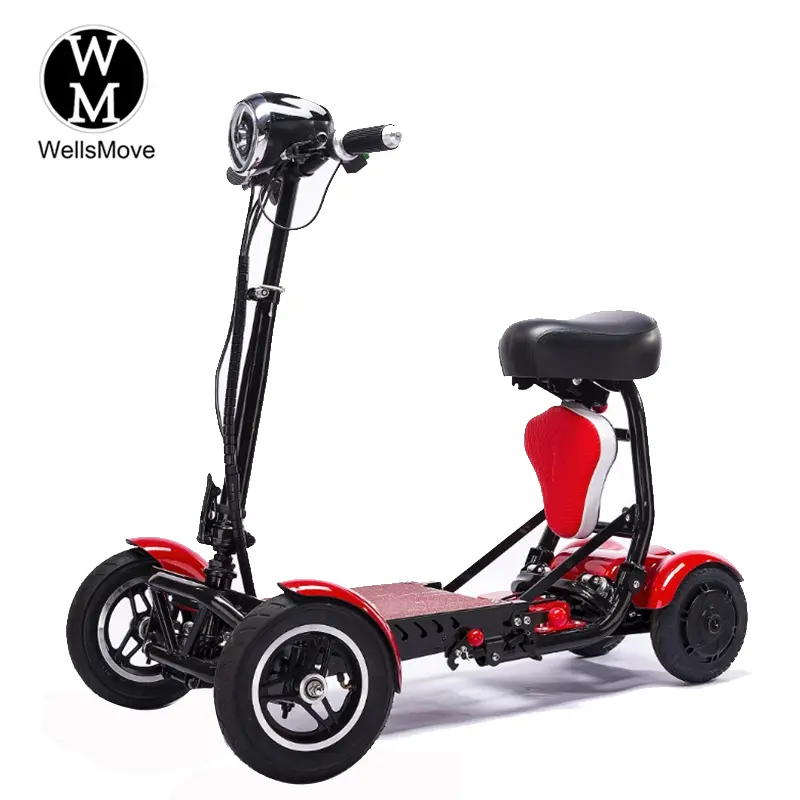As technology continues to advance, the options for individuals with mobility issues have expanded significantly. Two popular options for increasing mobility are mobility scooters and power wheelchairs. While both devices serve similar purposes, there are distinct differences between the two. Understanding these differences is critical for individuals and caregivers when deciding which option best suits their needs. In this article, we’ll explore the key differences between mobility scooters and power wheelchairs, and take a closer look at the unique features and benefits of each.
Mobility scooters: a convenient and versatile option
A mobility scooter is a motor vehicle designed to assist people with limited mobility. These scooters are typically used outdoors and are ideal for people who have difficulty walking long distances. The motorized scooter comes with a comfortable seat, steering handle, and tiller with speed and direction controls. They are available in a variety of models, including three- and four-wheel designs, and offer a range of features such as adjustable seats, storage baskets and headlights to improve visibility.
One of the main advantages of mobility scooters is their versatility. These scooters are great for running errands, traversing outdoor spaces, and attending social events. They are also relatively easy to operate and can travel at higher speeds than electric wheelchairs, making them a popular choice for people with active lifestyles. Additionally, many mobility scooters are designed to be detachable for transport, allowing users to take them on trips or store them in a vehicle for outings.
Electric Wheelchairs: Enhanced Comfort and Accessibility
Electric wheelchairs, also known as power wheelchairs, are specifically designed to provide mobility assistance to people with limited mobility. Unlike mobility scooters, power wheelchairs are primarily suitable for indoor use, although some models are suitable for outdoor use as well. These wheelchairs come with a comfortable seat, a joystick or control panel for steering, and a compact design that allows for easy maneuvering in tight spaces.
The main advantage of a power wheelchair is its enhanced accessibility features. These wheelchairs are designed to provide a higher level of support and comfort for individuals who require constant use of mobility devices. Power wheelchairs offer customizable seating options, including tilt, tilt and raise leg rests, to suit a variety of postures and comfort needs. In addition, many electric wheelchairs are equipped with advanced suspension systems to ensure a smooth and stable ride on uneven surfaces.
Differences in functions and uses
When comparing mobility scooters and power wheelchairs, differences in functionality and purpose must be considered. Mobility scooters are best for individuals who have some level of mobility and can walk short distances but need assistance covering longer distances or standing for long periods of time. Ideal for outdoor activities such as shopping, sightseeing, and casual outings, these scooters provide users with the freedom to move independently in a variety of environments.
Power wheelchairs, on the other hand, are designed for people with more limited mobility, including those who have difficulty walking or standing for long periods of time. These wheelchairs offer a higher level of support and stability, making them suitable for indoor use, maneuvering through tight spaces, and performing daily activities at home or in a medical setting. Power wheelchairs are typically prescribed by healthcare professionals based on the user’s specific needs and mobility limitations.
Things to consider when choosing the right option
When deciding between a mobility scooter and a power wheelchair, several factors should be considered to ensure the chosen option meets the user’s needs and lifestyle. Some key considerations include:
Mobility Needs: Assessing the user’s mobility limitations and requirements is critical to determining whether a mobility scooter or power wheelchair is the most appropriate option. Consider the user’s ability to walk, stand, and get in and out of the mobile device.
Lifestyle and Activities: Understanding the user’s lifestyle and preferred activities will help determine the most suitable mobility solution. Consider whether the user will need the device primarily for outdoor use, indoor use, or a combination of both.
Comfort and Support: Assess the user’s comfort and support needs, including seating preferences, postural support requirements, and any specific features that enhance the user’s overall comfort and well-being.
Transportation and Storage: Consider the user’s need to transport their mobile device, whether traveling, out and about, or stored in the car. Evaluate the portability and detachment options of the selected equipment.
Accessibility and operability: Consider the user’s living environment and the accessibility of the space where mobile devices are used. Consider the maneuverability and turning radius required to get through doorways, hallways, and other confined spaces.
Ultimately, the decision between a mobility scooter or an electric wheelchair should be based on an individual’s specific needs, preferences, and lifestyle. Consulting with a healthcare professional or mobility specialist can provide valuable guidance in choosing the most appropriate option.
in conclusion
In summary, while mobility scooters and power wheelchairs share a common purpose of enhancing mobility for individuals with limited mobility, they offer unique features and benefits that meet the needs of different users. Mobility scooters are versatile and ideal for outdoor activities, providing users with independence and freedom to navigate a variety of environments. Power wheelchairs, on the other hand, offer enhanced comfort, support, and accessibility features, making them ideal for individuals with limited mobility, especially for indoor use.
Understanding the key differences between mobility scooters and power wheelchairs is crucial for individuals and caregivers to make informed decisions that best meet the needs of the user. By considering factors such as mobility needs, lifestyle, comfort, transportation and accessibility, individuals can choose the most appropriate mobility solution to increase their independence and quality of life. Whether it’s a mobility scooter or a power wheelchair, both options can provide valuable support and empowerment to individuals with limited mobility.
Post time: Aug-14-2024



